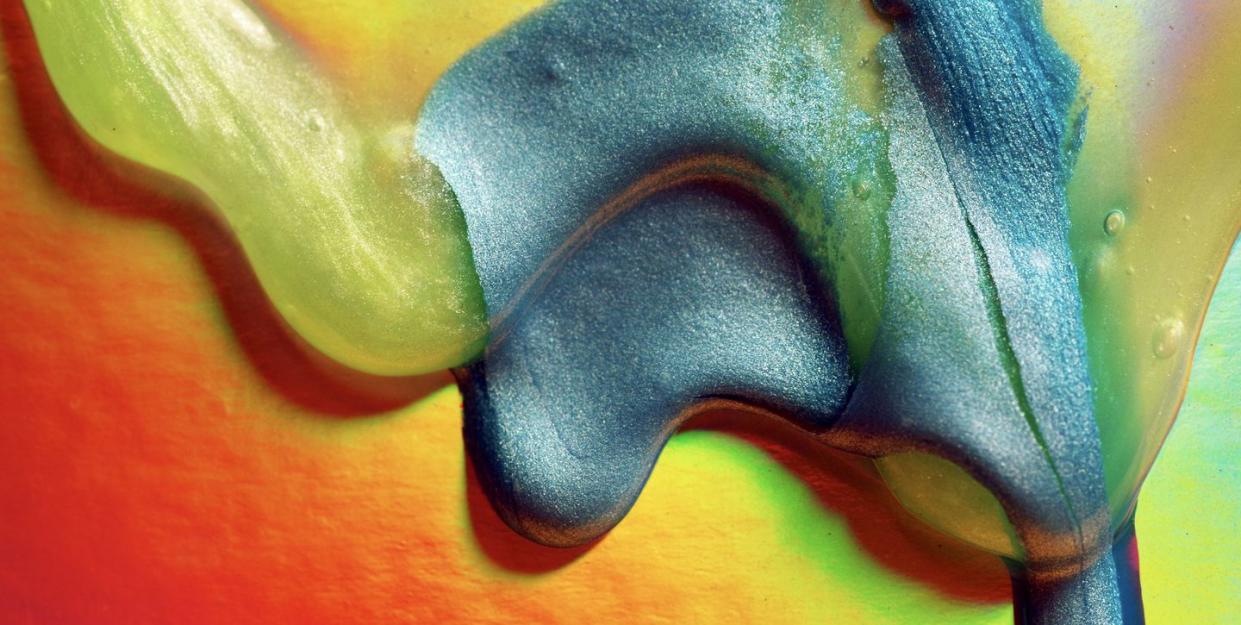Slimy Mucus Is Everywhere—And That’s a Good Thing

Mucus is so important that it evolved separately across many different animal species.
A study shows that mucins, the building block of mucus, developed 15 different times across 49 mammals.
University at Buffalo researchers found that simple proteins transformed into mucins with the addition of long chains that incorporate sugar molecules.
Your earliest memories of mucus probably revolved around the contents of your nostrils. As a toddler, you were told not to “pick your nose” and you learned to find the slimy mucus gross.
But for many animals—humans included—mucus is integral to basic life functions. Its molecules, called mucins, are in liquids ranging from the slippery saliva that eases the passage of food down the throat and through the digestive system, to a medium of transportation for slugs. It turns out mucus is so useful, it evolved independently across many species.
👅 You love weird stuff. So do we. We’ll help you make sense of it all—join Pop Mech Pro.
Researchers at the University at Buffalo wanted to know how this evolution took place in mammals, and they think they’re close to an answer. In a new study about mucins, the proteins that give mucus its sticky, slimy quality, the researchers identified 15 times mucins seem to have developed in 49 different mammals, including human beings, mice, rats, pigs, cows, ferrets, and dogs. By comparing mucin genes among the different species, researchers found that evolution had created mucins the same way each time: by transforming a non-mucin protein into a mucin. They published their research late last month in Science Advances.
Mucinization in Mammals
At some point in the evolutionary history of nearly 50 animals, a new type of protein emerged. It was made of a short section of regular protein building blocks, called amino acids, that already performed some function in the body. But then nature embellished these building blocks with sugar molecules. Eventually, these new structures formed chains containing multiple copies of themselves. Each of these chain structures formed a mucin.
You can thank the sugar and the long, repeated structure of mucins for their gooey quality. Like bristles protruding outward from a bottle brush, sugar molecules give the protein building blocks the stickiness needed to cling to more copies of themselves—and to other things.
From an evolutionary point of view, sticky stuff is an extraordinarily useful tool. “Beneficial microbes have evolved to live on mucus-coated surfaces, while mucus can at the same time also act as a protective barrier and defend against disease by shielding us from unwanted pathogenic intruders,” Stefan Ruhl of the University at Buffalo School of Dental Medicine and professor of oral biology, says in a news release. Mucins also lubricate and protect the body’s tissue surfaces, he adds.
This study of mucin structure may represent the first discovery that a protein’s function can evolve simply from tacking on repeated sequences, Omer Gokcumen, a senior author of the study and a professor at the university, says in the release. “A protein that isn’t a mucin becomes a mucin just by gaining repeats. This is an important way that evolution makes slime. It’s an evolutionary trick, and we now document this happening over and over again,” he explains.
Mucin Clues in Mice and Humans
For 30 years, Ruhl’s lab has been studying how mucins in saliva shield teeth from decay and help balance the many types of microbes that live in our mouths. The team was taking a closer look at saliva and noticed similarities between human and mouse saliva. While the specific human mucin, MUC7, was absent in mice, the smaller mammals did have a similarly sized mucin, MUC10. The team realized that while these two particular proteins didn’t share an evolutionary past, mouse and human proteins did have something in common: a protein found in human tears had the same structure as a part of the mouse salivary protein, MUC10. The main difference was that the proteins in human tears don’t have the sugar-coated amino acids, but MUC10 does.
It turned out that the human tear protein, called PROL1, ended up being “repurposed,” Gokcumen says. “It gains the repeats that give it the mucin function, and it’s now abundantly expressed in mouse and rat saliva.” In fact, many mucins began the same way, with the addition of repeated chains of sugared proteins, the team concludes.
There are many more animals whose mucin-related genes the team would like to study, including snails. The fact that the mucin adaptation keeps cropping up in so many animals means it’s a significant gene function that needs more investigation, says one of the study’s authors, biological sciences Ph.D. student Petar Pajic, in the release.
“If these mucins keep evolving from non-mucins over and over again in different species at different times, it suggests that there is some sort of adaptive pressure that makes it beneficial,” he says.
You Might Also Like


